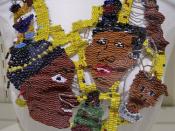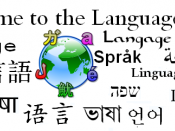Mention the word ebonics and you're sure to get a variety of responses ranging from a highly specialized language to slang. My purpose in writing this paper is to define ebonics, explain its history, and shed some light on the social and educational implications of this highly controversial subject. In doing so, I have been very selective in choosing my resources to provide accurate information and not simply opinion.
DEFINING EBONICS: The word ebonics is made up of two words. Ebony, which means black and phonics, which refers to sound. It is a systematic rule-governed natural speech that is consistent as any other language in sentence structure. This is referred to as syntax (Gray 1-3). What makes this speech pattern uniquely different to "so called" American Standard English is its verb tense or lack there of. An example of this can be seen in the sentence, "He is sick today."
This same sentence translated in ebonics would read, "He sick today." As you can see the verb has been omitted. However, as earlier stated, this speech pattern is consistently used (Black English: Its history and role in education. 1-4). Major controversy has arisen whether or not ebonics is a separate language or simply a dialect. In doing my research I have found that most linguists take the position that ebonics is a dialect. What distinguishes dialect from language is that in dialect two speakers share most or some of the same vocabulary and is recognizable and understandable. In contrast, separate languages are present only when the inability to communicate verbally occurs (Rickford 1-3).
ARE EBONICS AND OTHER DIALECTS OF ENGLISH SIMPLY INCORRECT, SLOPPY SPEECH? American schools, particularly in the northern United States, have treated African American vernacular English or Black English as a form of language requiring remediation by...


